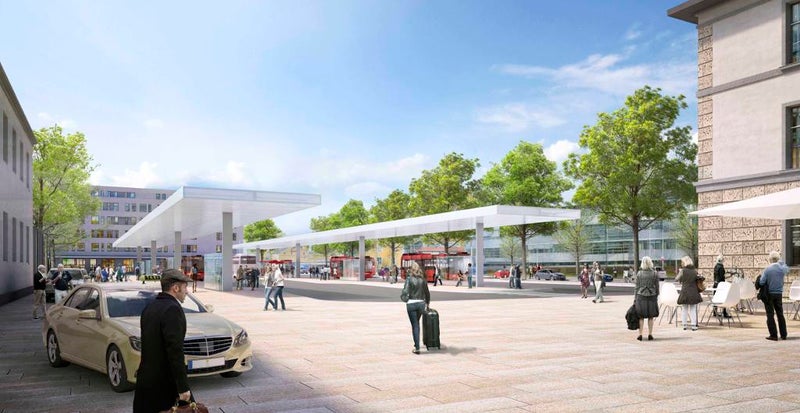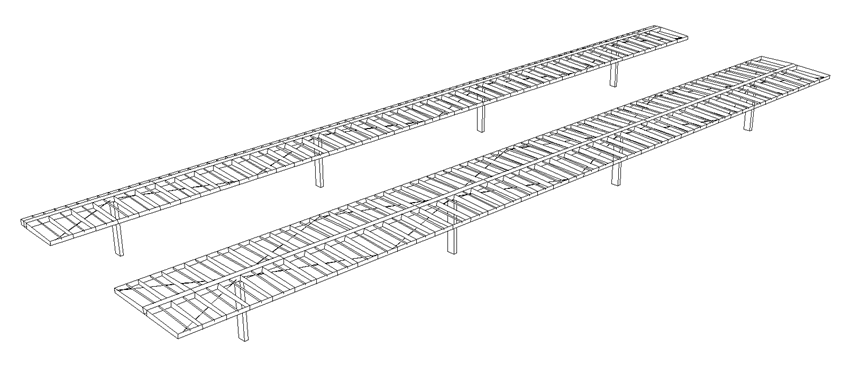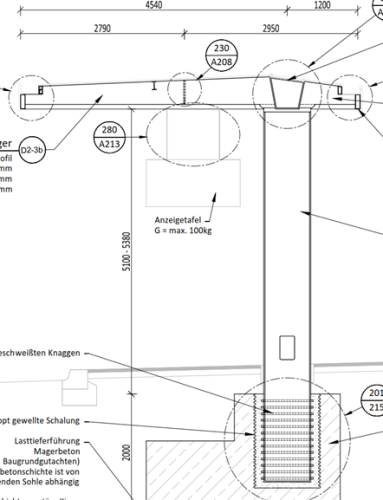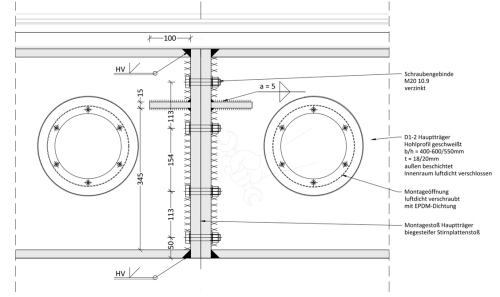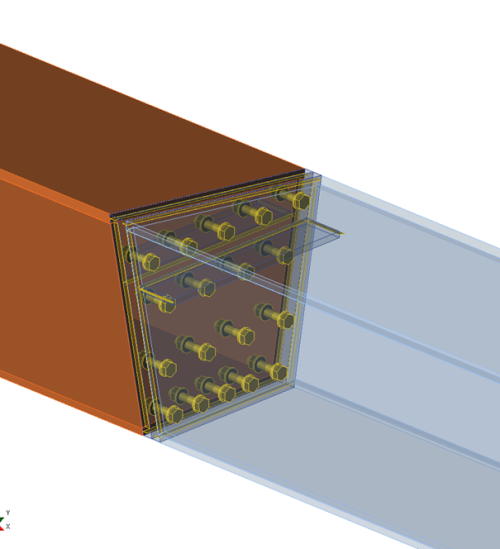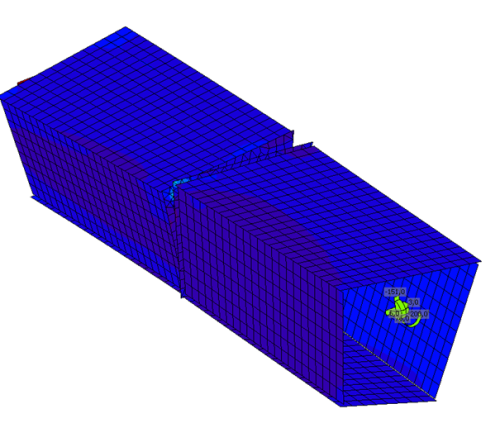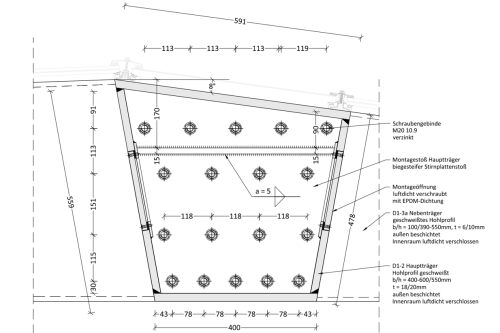Bus station steel structure, Rosenheim, Germany
The bus station consists of a cantilever roofing structure (cantilever approx. 4.5 m) of the total length of 84 meters. The whole structure is supported by 4 columns.
Board member of LEICHT, Mr. Florian Weininger, comments on using IDEA StatiCa in this project:
We used the software IDEA StatiCa during the service phase 5 (Leistungsphase 5) acc. to HOAI – Execution planning (Ausführungsplanung).
The architectural design requirements were governing the connection design – all had to be concealed.
This led to extraordinary steel connections with high demands on structural analysis, design, and verification. Therefore, we decided to use IDEA StatiCa for the design of these extraordinary joints – for example the connections of the primary central beam to the columns and the field joint of the main beam.
The structure is loaded with all 6 types of forces, incl. bending (torsion) around all axes. In IDEA StatiCa we were able to set a general typology and load the connection in required directions.
We designed, loaded and checked all joints in IDEA StatiCa. We obtained accurate analysis and code-checks of the joints which allowed us to design the best geometry and topology to fulfill both architectural and structural demands.
The design report with calculations and checks was submitted to the proofing engineer (Prüfstatiker) as required by the German regulation. The proofing engineer approved the calculation.
The construction is in the workshop phase was finished in August 2017.
Connection of the main beam and secondary beams to the columns
Assembly joint of the main beam
Webinar about the bus station project
Design and code-check of the main joint built of members with a non-standard cross-section as a part of the roofing structure were introduced also on one of our webinars in 2018. Enjoy the webinar recording:


